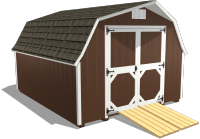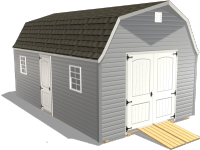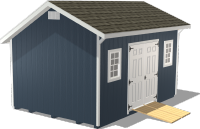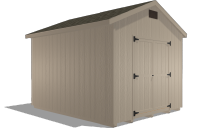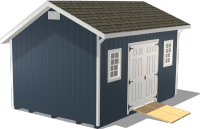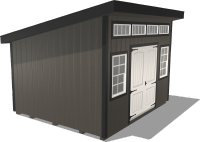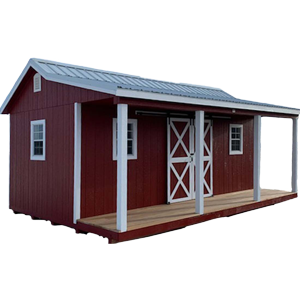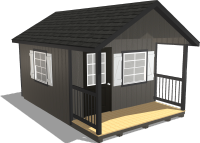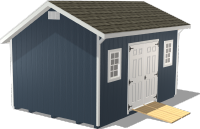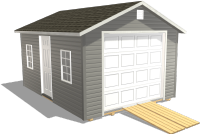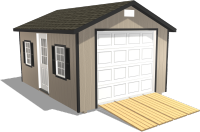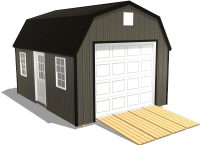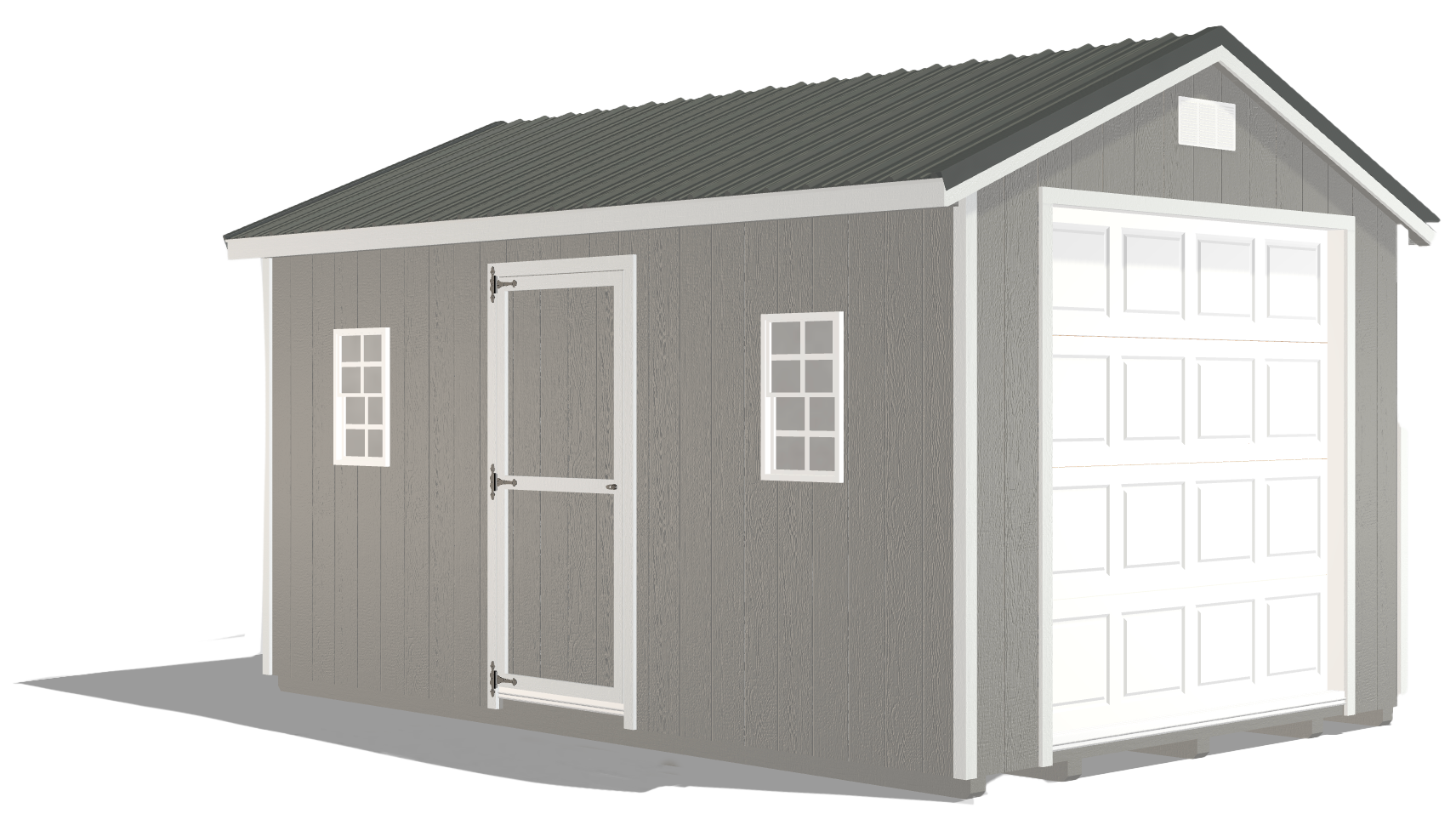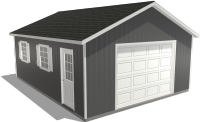Greenhouse Basics for Backyards: What & Why You Need One
by Dakota Storage Buildings, on May 16, 2025

If you are a passionate gardener but have to face the challenge of the brief and often unpredictable growing seasons of northern climates, the idea of types of greenhouses has likely crossed your mind. Extending your gardening season, engaging with a wider variety of plants, and enjoying the fruits of your labor year-round is undeniably appealing.
However, the path to making an informed decision about whether a greenhouse is right for you may be loaded with questions.
What type of greenhouse for backyard gardening best suits your needs? How will it impact your gardening practice? And crucially, how can you ensure that your investment is both cost-effective and rewarding in the long term?
By providing an overview of the benefits and challenges associated with greenhouse gardening, this post aims to equip you with the knowledge necessary to make a decision that aligns with your aspirations and circumstances.
Greenhouses 101
Greenhouse gardening opens up a world of possibilities for enthusiasts looking to garden year-round. Greenhouses transform the way we interact with our plants and gardens. From creating a controlled environment that defies seasonal limitations to doubling as a serene retreat, there are numerous reasons to invest in a greenhouse for backyard gardening.
Greenhouses for Year-Round Gardening

A greenhouse for backyard gardening is not just a structure; it is a year-round retreat. It offers the perfect environment for temperature control, allowing you to cultivate plants that would otherwise be impossible to grow in colder climates.
This controlled microclimate extends the possibilities of what you can grow and nurtures a connection with nature that can be enjoyed regardless of the weather outside.
Greenhouses as Versatile Spaces
Greenhouses for backyard gardening are versatile spaces that can cater to a variety of needs and desires. Envision transforming part of your greenhouse into a serene retreat for those crisp fall mornings and chilly winter days, a place where the beauty of your garden can be appreciated year-round.
It can also serve as a space for gardening-related projects and hobbies. Backyard greenhouses can become cornerstones for wellness and tranquility, a place to unwind and connect with nature.
The flexibility of a greenhouse means it can be customized to fit not only the practical aspects of gardening but also the personal aspirations of the gardener, making it a truly integral part of your home and lifestyle.
Learn more about how you can utilize greenhouses.
The Benefits of Greenhouses for a Thriving Garden
Beyond simply extending the planting calendar, greenhouses for backyard gardening empower gardeners to master their environment, elevating both the quantity and quality of their yields.
Here are three ways these structures redefine what is possible in your garden.
|
Harvest Potential: With backyard greenhouses, the growing season is extended and supported. Protected from the external environment, your plants can flourish under optimal conditions, significantly boosting your harvest potential. This controlled space shields your plants from pests and adverse weather and jumpstarts productivity by providing an early start for seedlings. |
|
Defending Threats: One of the primary advantages of a greenhouse is its ability to defend against common gardening threats, from invasive bugs to unpredictable weather and frost. This defense mechanism ensures the health and longevity of your plants, contributing to a more rewarding gardening experience. |
|
Gardening Needs: A greenhouse for backyard gardening serves as a multifunctional space that caters to all your gardening needs. Whether it is starting seedlings, nurturing exotic plants, or experimenting with new gardening techniques, the possibilities are endless. |
Dive deeper into these benefits.
Transform Your Gardening Year-Round With a Backyard Greenhouse
A greenhouse for backyard gardening extends the growing season and revolutionizes how you garden, allowing you to cultivate plants that would typically struggle in your local climate.
With a structure that controls temperature, humidity, and light, a greenhouse offers a sanctuary for a diverse range of plants, providing them with optimal growing conditions regardless of the weather outside.
Greenhouses harness natural processes to create an energy-efficient environment ideal for plant growth. This controlled setting promotes healthy, vigorous plants and reduces common garden problems like diseases and pests.
Whether you're aiming to enjoy fresh vegetables in winter or protect delicate seedlings from harsh weather, a greenhouse provides the perfect solution. It enables you to grow a variety of plants, enriching your gardening experience and increasing your crop yield and quality.
Explore the endless possibilities of greenhouse gardening.
Your Greenhouse Growing Guide for Each Season
Spring: Kickstart Your Greenhouse Growing
Spring marks the start of the greenhouse growing season, ideal for sowing seeds of cool-season crops like lettuce, spinach, radishes, and early herbs such as parsley and cilantro.
It's also the time to clean and prepare your greenhouse while starting seeds for summer crops like tomatoes, peppers, and cucumbers indoors. To maximize success, maintain consistent soil moisture and develop a seed-starting schedule to transition smoothly into the warmer months.
Learn more about planting early crops in the spring to maximize harvest.
Summer: Optimize for Heat-Loving Plants
During the summer, your greenhouse becomes a hub of activity with the growth of heat-loving vegetables and fruits. The key to having a successful summer garden is managing the intense heat through adequate ventilation and effective shading. This protects plants like tomatoes, cucumbers, and peppers, along with herbs such as oregano and basil.
By regularly monitoring and adjusting greenhouse conditions, such as humidity and temperature, you can prevent plant stress and promote abundant yields.
See which plants are perfect for a summer garden.
Autumn: Prepare for the Cool Season
As temperatures cool, autumn is your opportunity to transition from summer crops to planting cool-season vegetables like kale, broccoli, and root vegetables.
This season requires balancing the tail end of summer harvests while preparing your greenhouse for the colder months. Introducing supplemental lighting can counter shorter daylight hours, and increasing insulation will help maintain a stable environment for your plants.
Read more about harvesting summer crops and planting cool-weather produce.
Winter: Sustain Growth With Cold-Hardy Varieties
Winter doesn't mean the end of greenhouse gardening. By growing cold-hardy greens like kale and spinach, and root vegetables that sweeten with the cold, you can continue harvesting fresh produce.
Utilizing heaters, grow lights, and maintaining good insulation and ventilation will ensure your greenhouse for backyard gardening remains a productive, frost-free haven during the coldest months.
Explore best practices for growing plants in the winter months.
Keeping Your Greenhouse Productive Through Seasonal Shifts
Seasonal transitions can be challenging in a greenhouse for backyard gardening. Without proper adjustments, plants may experience stress, leading to poor growth or disease. Here’s how to keep your year-round greenhouse stable as the weather changes.

Managing Temperature Fluctuations
- In winter, use thermal mass objects like water barrels to absorb and slowly release heat overnight. Install greenhouse heaters to prevent frost damage.
- In summer, use shade cloths to protect plants from excess sunlight and increase airflow with vents, exhaust fans, or automatic louvers to prevent overheating.
Humidity and Ventilation Strategies
- Excess humidity can lead to mold and mildew. Use circulating fans and vents to improve airflow.
- In dry seasons, misting systems can help maintain adequate humidity levels.
Seasonal Light Adjustments
- Winter: Add supplemental LED or fluorescent grow lights to compensate for reduced daylight.
- Summer: Use shade cloths to filter harsh sun rays and prevent premature bolting of greens.
Smart Watering and Irrigation Adaptations
- Adjust watering schedules based on temperature. Deep watering in the morning works best in summer, while lighter, frequent watering prevents root rot in cooler months.
- Drip irrigation provides consistent moisture while minimizing water waste.
Read more tips on how to adapt to changing weather.
Grow Leafy Greens All Year in Your Greenhouse
Leafy greens thrive in greenhouse environments, and with the right approach, you can enjoy a continuous harvest year-round.

Best Leafy Greens for Year-Round Harvest
- Cool-Season Greens (Fall & Winter): Spinach, romaine lettuce, kale, and arugula thrive in cooler temperatures.
- Warm-Season Greens (Spring & Summer): Swiss chard, basil, microgreens, and watercress are heat-tolerant and flourish in warm conditions.
- Heat-Tolerant Herbs: Rosemary, oregano, and thyme adapt well across seasons, making them great year-round additions.
Succession Planting for Continuous Greens
To ensure a steady supply, stagger plantings every few weeks. Quick-growing greens like microgreens and baby lettuce can be harvested in as little as 10–14 days, making them perfect for filling gaps between slower-growing crops.
Soil and Nutrient Management
- Rotate crops to prevent soil depletion and minimize disease buildup.
- Use organic fertilizers like compost tea or fish emulsion to keep soil nutrient-rich.
Learn more about growing fresh greens each season.
Knowing the Right Materials for a Quality Greenhouse

If you want to have a year-round backyard greenhouse, the details matter. The materials and design choices have a profound impact on the functionality, durability, and overall success of your gardening sanctuary.
The Best Roofing Materials
Choosing the correct roofing material for your greenhouse is a pivotal decision that impacts everything from the microclimate to the overall health of your plants. Whether you opt for glass, polyethylene, or fiberglass, each option comes with its own set of benefits tailored to different gardening needs.
- Glass allows for maximum sunlight penetration, creating a warm environment perfect for a wide range of plants.
- Polyethylene provides excellent light diffusion, promoting even plant growth without hot spots.
- Fiberglass stands out for its longevity and its ability to retain heat, making it ideal for colder climates.
Each of these materials can be tailored to suit specific environmental conditions, ensuring that your greenhouse for backyard gardening offers the perfect balance of light and temperature to foster an optimal growth environment.
Essential Add-Ons
Enhancing your greenhouse for backyard gardening with the right add-ons can transform it from a simple growing space to a personalized gardening haven. High-performance flooring ensures stability and protection for your greenhouse structure, while the choice of benches and shelving determines the organization and accessibility of your plants.
The type of exterior frame affects not just the aesthetic appeal but also the structural integrity of the greenhouse. Interior painting can reflect light to benefit the plants and add a touch of personal style to the space.
Together, these customizable features allow you to tailor your greenhouse to fit not only your gardening requirements but also your aesthetic preferences, making the time you spend in your greenhouse as enjoyable and productive as possible.
Read more about premium materials.
Elevate Your Gardening With a Well-Crafted Greenhouse
By adapting your practices and choosing the right crops for each season, you can enjoy fresh produce all year long.
Each season brings unique challenges, but with proper planning and the right approach, your greenhouse for backyard gardening can stay productive no matter the weather outside. The key is to remain flexible and responsive to your plants’ needs, adjusting factors like temperature, humidity, and light to maintain optimal growing conditions.
Use this guide as a resource throughout the year to keep your garden thriving. If you are ready to take your greenhouse gardening to the next level, explore our range of stock greenhouses designed to support your gardening journey.
With the right greenhouse setup, you will be equipped to grow healthy, vibrant crops in any season.





